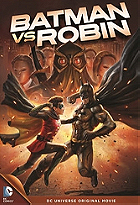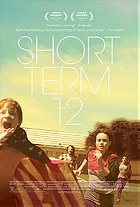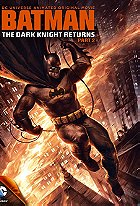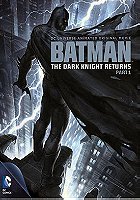As of right now, this is the final entry in the Damian Wayne trilogy of films detailing his introduction into the Bat-Family, his eventual crossroads, and here we see him returning to the fold fully converted. Bad Blood also introduces us to Batwoman, already operating but brought under the wing (so to speak), and Batwing, brand new to the superhero game and team. This is clearly the best of the trilogy for one simple reason, and that’s how closely the story sticks to character and drama and moves away from violence and explosions.
The tension between Damian and Dick, Bruce and his protégées, and the two new recruits to the entirety of the Bat-Family keeps this thing humming. Batwing doesn’t get quite enough play here, but he adds a nice spark of personality and diversity to the team. It’s quite humorous to see Dick Grayson wear the cowl, and his distinct discomfort in the role adds some fun comedic moments both solo and with Damian’s snotty intellect. Yet it’s Batwoman that’s the clear standout in this thing, bringing a tragic backstory, a fully realized female character, and a sense that we want to learn more about her. Would it be outside the realm of possibility to see DC animated films take a swing at Elegy soon?
However, there’s still a glaring problem with Talia in these films. She plays a larger part of the narrative this time around, but she’s a complete 180 from her appearance in Son of Batman. Granted, caring and occasionally sympathetic anti-heroine and callous, psychotic mastermind exist simultaneously for her in the comics, but one film places her entire characterization on one side and the other on the reverse side. There’s no bridge between the disparate sides of her personality between them. In Son of Batman she’s a devoting mother, and in Bad Blood she’s ready to consider him expandable at a moment’s notice. It doesn’t entirely work when taken as three films telling one stretched out story.
Still, we watch these things for the sense of adventure and fun that they bring us, and Bad Blood’s glut of villains and smartly paced out action scenes. They’ve also stopped with the needless bloodletting and believability-shattering injuries. In the end, what saves the day are a surrogate and biological son making emotional pleas to their father. This choice feels like something stripped directly from the comics, and it’s a smart choice. Bad Blood’s still somewhere in the middle of the pack as far as these direct-to-DVD films go, but it’s a marked improvement in the Batman’s New 52 inspired loose adaptations. Check that cameo appearance for where the next eventually entry will take us. Frankly, I’m ready to see what that character has to offer.
 Login
Login
 Home
Home 95 Lists
95 Lists 1531 Reviews
1531 Reviews Collections
Collections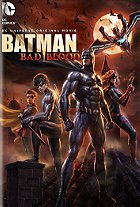
 0 comments,
0 comments, 